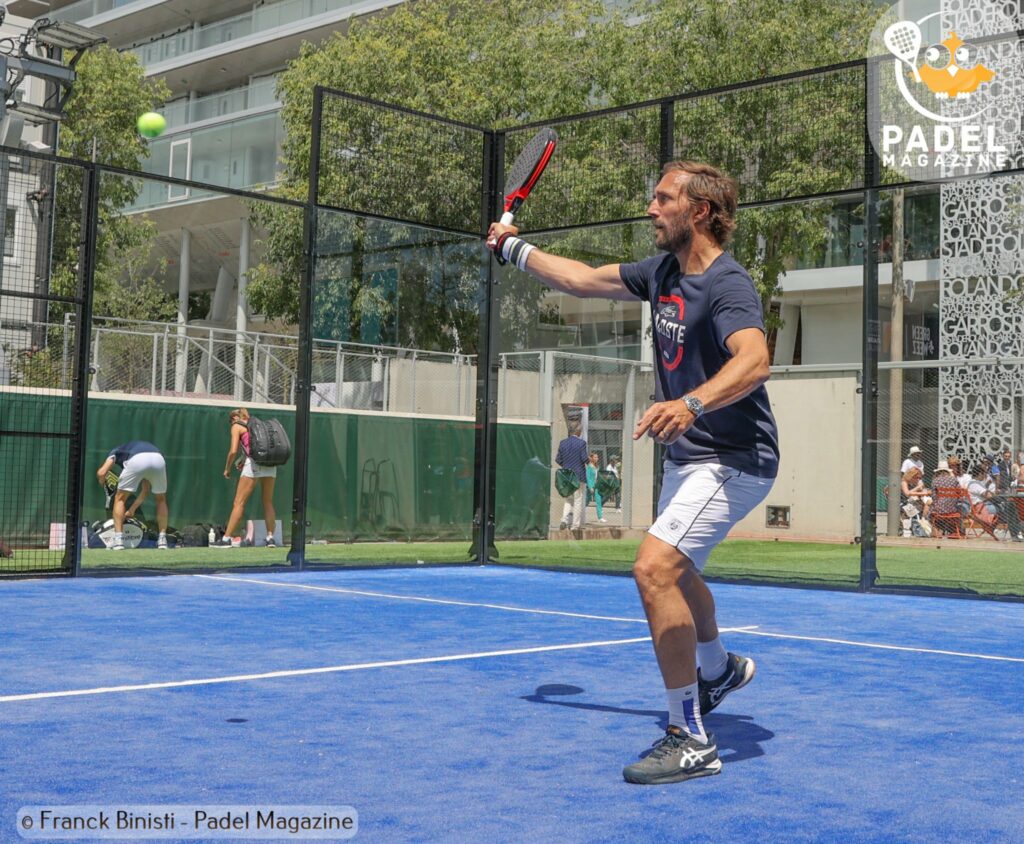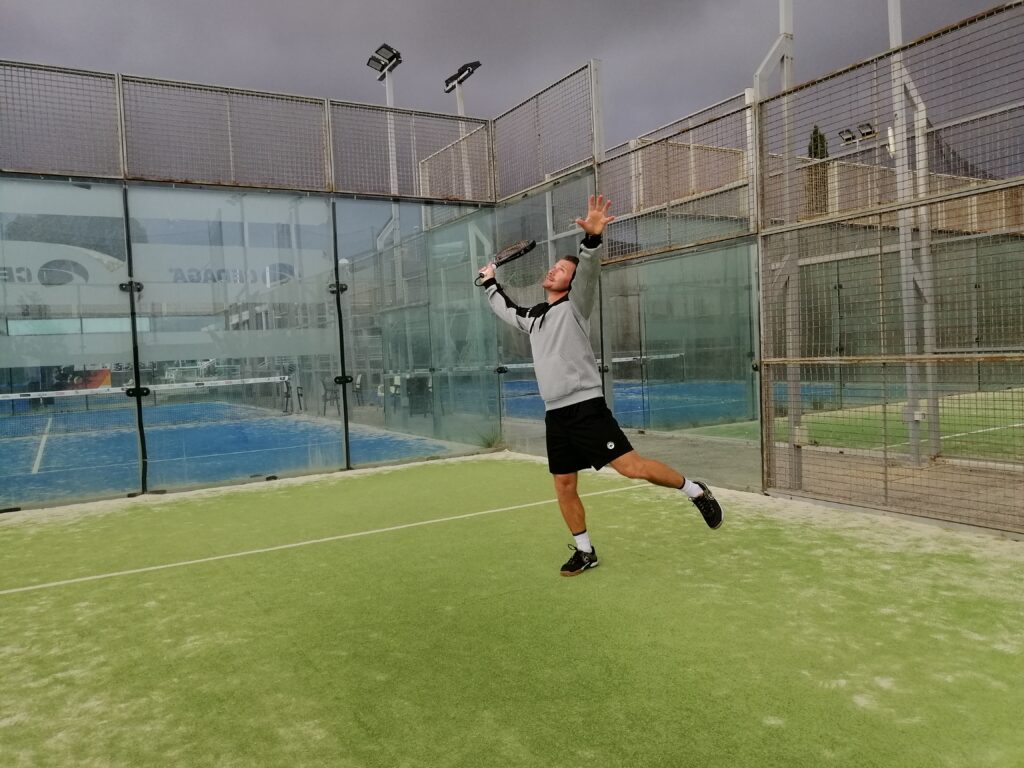We may say, repeat and repeat to be wary, many players of padel are irresistibly drawn to "no man's land". Kind of “Bermuda rectangle” of the runway padel, no man's land is the so-called "transition" zone located just in front of the service line.
We always tell beginners that above all they should not drop anchor in these 25 to 30 m²,… And yet, many freshwater sailors anchor there for too long… at the risk of sinking.
First of all, tell yourself that this expression no man's land (or land without man) was not chosen without reason. The Larousse dictionary defines it as an "unoccupied space between the first lines of two belligerents". In other words, a area where soldiers are defenseless, exposed to enemy fire and shelling...
Well, at padel, it's the same. But let's look at the reasons that lead players to venture into this area and especially to stay there.
There is no point running ?
■ Laziness.- Why spend your time running back and forth when you can take it easy without moving? This is the intuitive calculation that many players do. We will see that this idea is not so good.
■ Centrality.- Positioning yourself two or three steps from the net and two or three steps from the back of the court seems very practical for covering your half-court. But it requires a lot of speed and anticipation. And we don't play padel like choosing an apartment in town…
■ The tennis past.- Because they are often good at volley and half-volley, skilful at playing a ball in front or behind them, many tennis players playing padel remain stuck in the no man's land. Again, this is often a miscalculation.

Try another tactic
Even if you think you have a decent success in your shots played from no man's land, we invite you to read the following and try another tactic.
■ A must-see area.- Playing no ball from this area is obviously impossible. Whether it is to advance towards the net or to retreat and defend, it is essential to pass through these three meters located in front of the service line.
After a service, for example, we generally play a neutral first volley, without risk taking, which allows us to move towards the net. There, we can be more offensive.
■ In attack.- Multiplying offensive volleys from no man's land exposes you to fault. Even with an irreproachable cladding and flawless address, a volley played from too far away is always more likely to go directly into the net or a grid, or even to be blocked by an opposing volleyball player who will have anticipated and made the step of more.
Also watch out for smashes from this area. It is often better to step back to play a beautiful bandeja without risk than attempting a hasty smash which will offer a counter ball to the opponents. A vibora in the diagonal is also recommended to take back the net in the best dispositions, provided you are well placed and control this shot.

Reduced risk of fault
■ In defense.- Unless you have made a very good lob that will prevent your opponents from finding length and ensure that you play a ball going forward, being too advanced inside the court robs you of time in defense, forcing you to make volleys or half-volleys, sometimes played behind you. You can hit one, two or three in a row, but if the opponents are good at the volley and the smash, they have every chance of taking advantage in the point.
In addition, being too advanced prevents, often by reflex, letting the ball pass to play it after the window. And even if we let it pass, we often have too much distance to cover and we find ourselves playing with our back to the net, in an acrobatic position. Conversely, if you are less than three meters from the window, you have time to step back to play the ball in front of you, moving forward...
In summary, we have everything to gain by not staying in no man's land – unless you are a high-level player, who will know how to choose the right time to get there and to take time from your opponents. Among amateurs, backing up quickly will most of the time allow you to defend in good conditions, to be able to slow down the game and take advantage of the windows to go back on the attack. Likewise, advancing quickly will put you in a better position to volley, with a greatly reduced risk of fouls. We try ?
After 40 years of tennis, Jérôme falls into the pot of padel in 2018. Since then, he thinks about it every morning while shaving… but never shaves pala in hand! Journalist in Alsace, he has no other ambition than to share his passion with you, whether you speak French, Italian, Spanish or English.





































































































 Premier Padel Brussels P2 – The women’s Big 4 at the semi-finals!
Premier Padel Brussels P2 – The women’s Big 4 at the semi-finals! Premier Padel Brussels P2 – Sanz and Nieto win a big fight against Lebron / Navarro!
Premier Padel Brussels P2 – Sanz and Nieto win a big fight against Lebron / Navarro! Premier Padel Brussels P2 – The break obviously did Sanchez / Josemaria good!
Premier Padel Brussels P2 – The break obviously did Sanchez / Josemaria good! Premier Padel Sevilla P2 – From the waiting list to previas for Dylan Guichard and Ricardo Martinez!
Premier Padel Sevilla P2 – From the waiting list to previas for Dylan Guichard and Ricardo Martinez! Guillaume Codron de Sud Padel : “A family project”
Guillaume Codron de Sud Padel : “A family project” Nallé Grinda: “Democratize the padel in the USA with PadelX "
Nallé Grinda: “Democratize the padel in the USA with PadelX " Simon Boissé: “We know that there are two nations in front of us”
Simon Boissé: “We know that there are two nations in front of us” Marie Maligo: “This period of frequent changes of partners was beneficial for me”
Marie Maligo: “This period of frequent changes of partners was beneficial for me” Gilles Moretton: “We will be able to put the padel at the level of tennis”
Gilles Moretton: “We will be able to put the padel at the level of tennis” Two P1000 doubled prize money approaching!
Two P1000 doubled prize money approaching! José Manuel Escin at the inauguration of Casa Padel DOS: “Finally, and thank you!”
José Manuel Escin at the inauguration of Casa Padel DOS: “Finally, and thank you!” Miguel Lamperti: three tie-breaks and a return to the quarter-finals!
Miguel Lamperti: three tie-breaks and a return to the quarter-finals! Big evening in Brussels with two seeded players on the mat, heckled number 1s…
Big evening in Brussels with two seeded players on the mat, heckled number 1s… A1 Padel – the French Open replaces the Mexican Open on the calendar
A1 Padel – the French Open replaces the Mexican Open on the calendar Padel Score comes to Tahiti for American Express Padel Cup!
Padel Score comes to Tahiti for American Express Padel Cup! Do you know the Rafa Nadal Academy Tour?
Do you know the Rafa Nadal Academy Tour? Play at padel on his yacht? Possible for €233.000!
Play at padel on his yacht? Possible for €233.000! Our Top 10 training courses padel in France and Europe
Our Top 10 training courses padel in France and Europe At the heart of padel – Episode 25: Paul and Andoni answer your questions
At the heart of padel – Episode 25: Paul and Andoni answer your questions Tactical padel – What to do when faced with players who systematically stay at the bottom?
Tactical padel – What to do when faced with players who systematically stay at the bottom? The basic tactics of padel
The basic tactics of padel At the heart of padel – Episode 25: Paul and Andoni answer your questions
At the heart of padel – Episode 25: Paul and Andoni answer your questions At the heart of padel – Episode 23: defend the window well
At the heart of padel – Episode 23: defend the window well Prohibition on playing topless Padel : the reasons
Prohibition on playing topless Padel : the reasons FIP Tour – Going far from Europe, THE strategy to earn points!
FIP Tour – Going far from Europe, THE strategy to earn points! What is a good football player? padel ?
What is a good football player? padel ? “Lefties give me headaches when I play against them!”
“Lefties give me headaches when I play against them!” At the heart of padel – Episode 14: how to earn points in winter?
At the heart of padel – Episode 14: how to earn points in winter? A par 4 is always a winner...even if you manage to defend it!
A par 4 is always a winner...even if you manage to defend it! Carbon fiber VS fiberglass: what to choose?
Carbon fiber VS fiberglass: what to choose? How to effectively test a racket padel ?
How to effectively test a racket padel ? La padel to fight Parkinson's disease
La padel to fight Parkinson's disease Don't play with a cracked or broken racket, your body will thank you!
Don't play with a cracked or broken racket, your body will thank you! Michel Cymes: “The padel, physically, it’s serious!”
Michel Cymes: “The padel, physically, it’s serious!” Jeremy Gala: “Promote the padel among young people in Belgium remains a challenge”
Jeremy Gala: “Promote the padel among young people in Belgium remains a challenge” The French Touch Academy organizes its selection day Padel-Study
The French Touch Academy organizes its selection day Padel-Study Report on the detection and training of younger generations
Report on the detection and training of younger generations